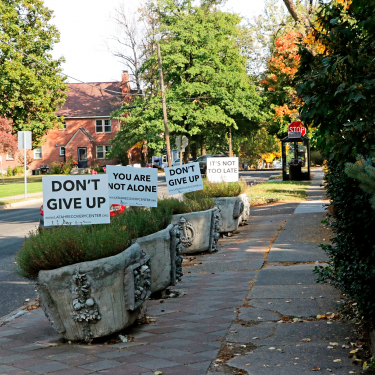What’s holding it back?
McGinty: The payer barriers are enormous. To the extent we do reimburse for CHWs, the payments tend to be very specific: You have to have this credential, and you can only deliver that service to exactly this specific person, if that’s reimbursed at all. It kills the flexibility of the model. We need to think about innovative financing mechanisms that get away from fee-for-service.
Miller: We need to create a national plan to scale and support these models. For example, we can train community members how to respond when confronted by someone who is feeling symptoms of depression, drinking too much, or even actively suicidal. This sort of task-shifting or task-sharing approach — using CHWs or other nonclinicians to act as coaches or navigators — works in other countries. To me, it’s the most potent idea everyone from our communities to Congress could embrace right now.
What about things we haven’t tried — for instance measuring the outcomes of mental health treatment on a broad scale, as the United Kingdom does?
Miller: We could start by assessing the measures we have and either simplifying them or getting rid of ones that are irrelevant, an issue highlighted several years ago by the National Academy of Medicine. Many measures don’t often give us the information we want to assess whether treatment is having a meaningful impact on the patient’s life. Did a person feel better? Were they able to achieve their goals? These sorts of person-focused, functional questions are rarely the focus of our measurement but are the types of things that matter to people.
What other policy changes are needed? How do we leverage payment policy, particularly for public programs like Medicare and Medicaid, to build a more robust mental health system?
McGinty: I think there’s an opportunity to do a lot of good around the integration of primary and behavioral health care. We’re so bad at it as a country. We made a little progress when CMS began paying for mental health care screenings and management of mental health conditions in primary care, but the evidence suggests this isn’t enough. To bill for these codes, primary care practices have to have a lot of structural components in place, including having a psychiatric consultant and a data tracking system. Some practices have no way of financing that. I don’t think we quite know what the solution is, but it’s something along the lines of bundled payments that enable practices to finance the infrastructure needed and reach more than just Medicare beneficiaries. That would incentivize primary care physicians to do this work.
Many mental health professionals, including psychiatrists, don’t accept Medicaid even though the program (along with the Children’s Health Insurance Program) is the single-largest payer of medical and behavioral health services, covering more than 80 million Americans. What will it take to expand access for Medicaid beneficiaries in particular?
Miller: Because of expected budget deficits connected to the pandemic, there is an opportunity for states to consider structural reforms to Medicaid programs — to create new types of integrated models that could expand access to care. This is top-of-mind for Medicaid directors right now. We recently partnered with the National Association of Medicaid Directors to offer a “Medicaid Forward” strategy for states. Among other strategies, we recommend states focus on prevention and partnering with community organizations to meet members’ social needs. We also point to the need for greater incentives for primary care providers to screen for and refer patients for behavioral health needs. The American Rescue Plan does create a new optional Medicaid benefit to help people experiencing a mental health or substance use disorder crisis. And the law provides additional funding for pediatric mental health services.
Smedley: Medicaid is a lifeline for many low-income adults, seniors, and children. We need to ensure that Medicaid offers comprehensive benefit packages and preventive services. Higher reimbursement will certainly help attract more providers to address the needs of the Medicaid population. For a brief time, shortly after the Affordable Care Act passed, Medicaid reimbursements were required to be equivalent to Medicare reimbursement, an important step to address provider shortages. I’m hopeful that Medicaid will also follow Medicare’s lead in authorizing telemental health services, and importantly, audio-only services for those who may not have access to broadband or comfort with technology.
The pandemic relief bills passed in 2020 and this year have included close to $8 billion for mental health care, raising the Substance Abuse and Mental Health Services Administration’s budget from $6 billion to $13.5 billion in just a few years. How do you hope the agency will use it?
Gionfriddo: It’s a lot of money — far more than they’ve ever seen. And while these dollars are “one-time” appropriations, there are already new dollars being added by the Biden administration to permanent funding as well. To get it out, they are going to have to give some states and communities the opportunity to innovate. While there is an opportunity to give long-standing providers of safety-net services a needed financial boost, I also would like to see a lot more money invested in prevention and early identification, especially for kids, because we have neglected the earlier stages of serious mental health concerns for far too long. I hope the pandemic has finally opened our eyes to that.

